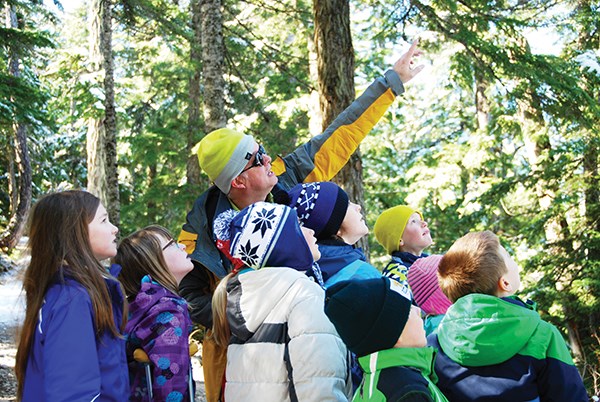Students in Brett Logan’s class at Coast Mountain Academy travelled up 885 metres into the mountains overlooking Howe Sound for a hands-on lesson in engineering and science.
The Junior Engineer program, designed by education developers at the Sea to Sky Gondola, has students in elementary and high school exploring the inner workings of the gondola.
“At CMA, we focus a lot on ecological stewardship, so it was interesting to learn the steps the gondola took during construction… to make their business lean and responsible,” said Logan, who plans to bring three more classes up to the subalpine forest.
“Seeing the inner workings of the gondola was very interesting. The power of the machinery reminded me of a sawmill. Our students love learning about how things are built and the process of mechanics.”
The gondola program is tailored to each grade and supplements what students are taught in class.
The youngest “junior engineers” in kindergarten to Grade 2 conduct experiments to examine the basic laws of movement and force and apply these principles to how the gondola moves and changes direction.
“This was a new topic for us – a jumping-off point for further discussion in class,” said Lisa Dickson, a kindergarten teacher at Squamish Montessori School. “This was our first field trip for kindergarten, providing a great social bonding experience.”
Since April, the program has also attracted schools from the North Shore and Vancouver. “The B.C. curriculum guidelines have changed this year to include students be out of the classroom experimenting more, in addition to learning from textbooks,” said Niki Hurst, education developer with the Sea to Sky Gondola.
The classes also include the Junior Ranger program, where students learn how to protect the plants and wildlife that live in the subalpine environment, and Education Excursions classes that teach backcountry awareness, including how to read maps and build shelters.
The Orientation to Squamish program explores the city and surrounding area, from the geological shaping of the land through to modern times. The historical component includes the impact of First Nations, European settlers and Chinese and Sikh labourers.
“It has really inspired the students to care about the environment,” said Hurst, adding the guides on staff, who include retired teachers and geologists, each have their own specializations to add to the curriculum.
She said students are better able to retain the information they study in class by seeing what they learn in real-life situations.
“This gives context to what they learn in a textbook. It’s fun and helps them remember.”



